Bathroom Enhancements
What Triggers a Water Softener to Regenerate

We’ve all experienced the frustration of hard water. Did you know that hard water affects more than 85% of homes in the United States?
But fear not, because we’re here to shed light on what triggers a water softener to regenerate. Understanding the factors that initiate the regeneration process is crucial for maintaining optimal water quality.
In this article, we’ll delve into the levels of water hardness, salt concentrations, water usage, timer settings, and system malfunctions that can influence when your water softener needs to regenerate.
Let’s dive in!
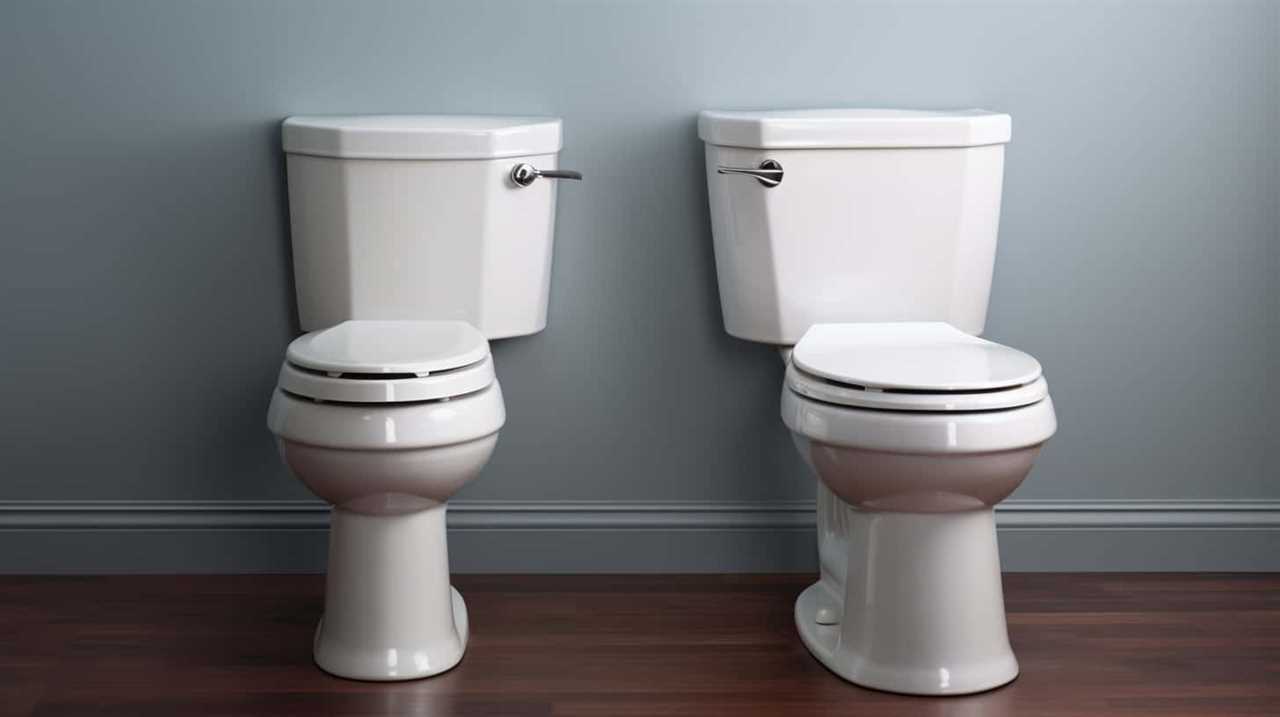
Key Takeaways
- Insufficient salt levels in the brine tank can lead to ineffective resin bed regeneration.
- Monitoring water usage and flow rate is crucial for determining when regeneration is needed.
- Timer settings control when and how often the regeneration process takes place, allowing customization based on specific water usage needs.
- System malfunctions such as low or high system pressure can affect the water softener’s ability to regenerate properly and should be addressed promptly.
Water Hardness Levels
To determine when our water softener needs to regenerate, we monitor the hardness levels of the water using a built-in sensor. This is crucial because high levels of hardness can have a significant impact on plumbing and appliances.
Excessive hardness can lead to the accumulation of mineral deposits in pipes, reducing water flow and causing clogs. Over time, these deposits can also corrode and damage the plumbing system, leading to costly repairs.
Additionally, the effects on appliances can be detrimental. Hard water can cause mineral buildup in appliances like dishwashers and washing machines, reducing their efficiency and lifespan. It can also leave behind spots and streaks on dishes, glasses, and silverware.
Salt Levels in the Brine Tank
After monitoring the water hardness levels, we need to ensure that the salt levels in the brine tank are sufficient for the water softener to regenerate effectively. The brine tank is a crucial component of the water softener system, responsible for creating a high concentration of saltwater known as brine. This brine concentration is essential for the regeneration process to occur.

During regeneration, the brine is flushed through the resin bed, replacing the hardness minerals with sodium ions. However, if the salt levels in the brine tank are low, the brine concentration may not be strong enough to effectively regenerate the resin bed. This can lead to insufficient resin bed saturation and reduced efficiency of the water softener system.
Therefore, regularly monitoring and maintaining adequate salt levels in the brine tank is necessary for optimal performance.
Transitioning to the subsequent section about ‘water usage and flow rate’, we’ll now explore how these factors can impact the regeneration process.
Water Usage and Flow Rate
During normal operation, we monitor water usage and flow rate to determine when a water softener needs to regenerate. This is an important factor in maintaining water conservation and ensuring proper plumbing maintenance. By monitoring water usage, we can identify when the softener is reaching its capacity and needs to regenerate. High water usage, such as increased showers or laundry, can deplete the resin bed quicker, leading to hard water flowing through the system.
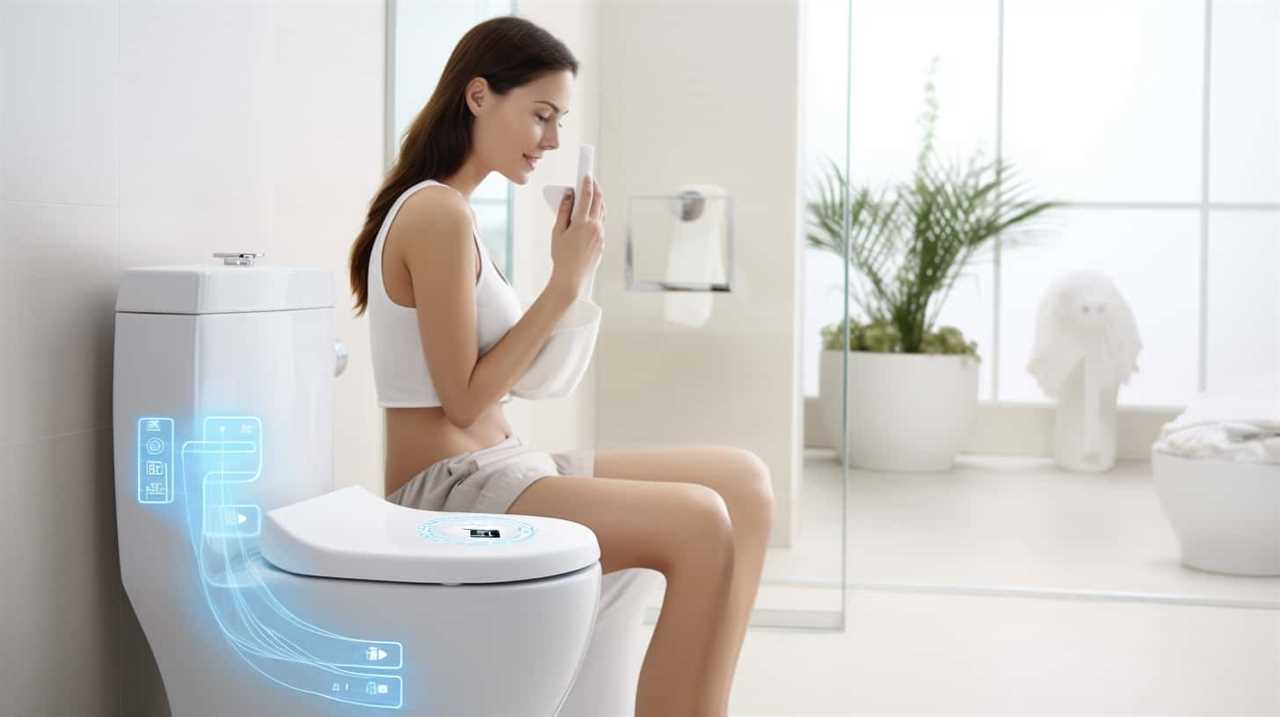
Similarly, low flow rates can indicate a decrease in water softening effectiveness. By closely monitoring water usage and flow rate, we can optimize the regeneration process and ensure that the water softener is functioning efficiently.
Now, let’s explore the next aspect of water softener regeneration: timer settings and regeneration frequency.
Timer Settings and Regeneration Frequency
As we continue our exploration of water softener regeneration, let’s delve into the important aspects of timer settings and the frequency at which regeneration occurs. Timer settings optimization plays a crucial role in ensuring the efficient and effective operation of a water softener. By adjusting the timer settings, you can control when and how often the regeneration process takes place. This allows you to customize the regeneration frequency based on your specific water usage needs.
To help you understand the benefits of regeneration at different intervals, let’s take a look at the following table:
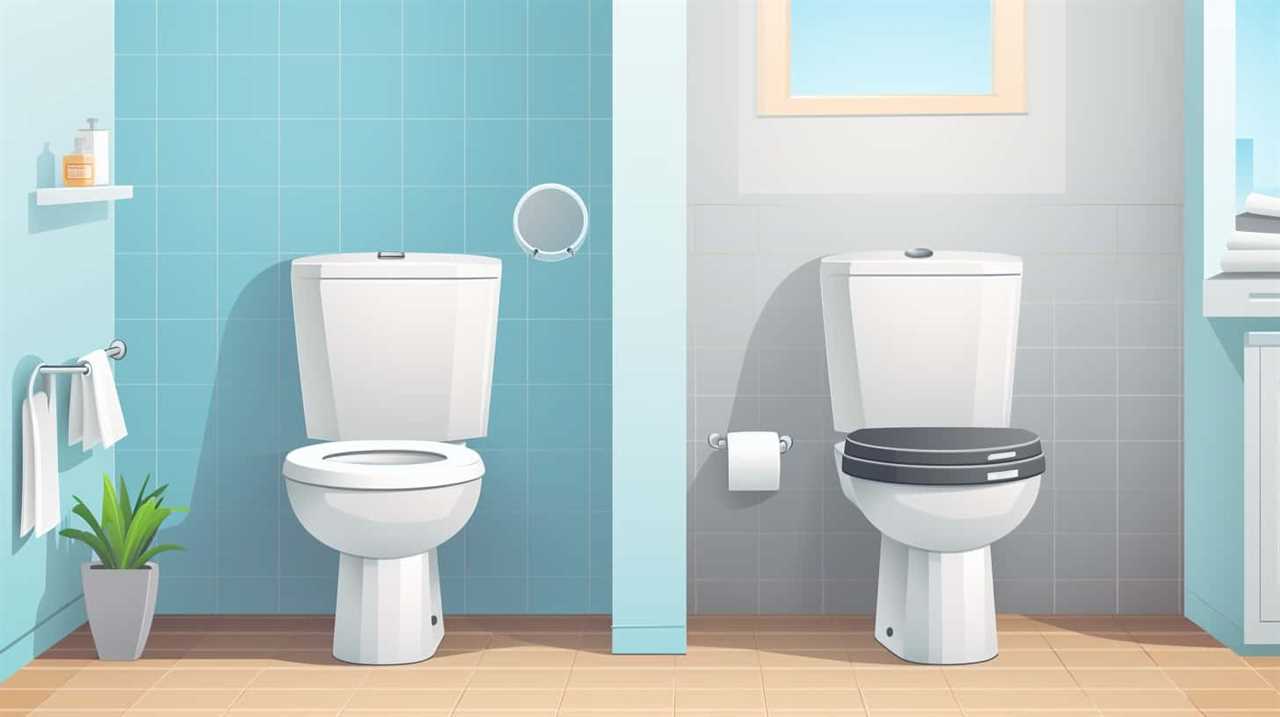
| Timer Setting | Regeneration Frequency | Benefits |
|---|---|---|
| Daily | Once a day | Consistent removal of hardness minerals |
| Every 2 days | Every other day | Reduced water and salt consumption |
| Weekly | Once a week | Extended lifespan of the resin bed |
System Malfunctions and Troubleshooting
To address system malfunctions and troubleshoot water softeners, we can examine common issues that may arise during the regeneration process. One potential problem is low system pressure. If the system pressure is too low, it can prevent the water softener from regenerating properly. This can be caused by a clogged or dirty resin bed.
To troubleshoot this issue, first check the system pressure gauge. If the pressure is below the recommended range, it may be necessary to clean or replace the resin bed.
Another potential malfunction is high system pressure. Excessive pressure can damage the water softener and lead to leaks or other issues. In this case, it’s important to check the system pressure relief valve and ensure it’s functioning correctly. If it’s not, it may need to be replaced to prevent further damage.
Frequently Asked Questions
How Does a Water Softener Actually Remove Hardness Minerals From Water?
Water softener mechanisms remove hardness minerals by passing water through a resin bed, which exchanges calcium and magnesium ions for sodium ions. Benefits of using a water softener include reduced scale buildup, improved appliance efficiency, and softer skin and hair.

Can a Water Softener Be Installed in Homes With Well Water?
We can install a water softener in homes with well water. It not only removes hardness minerals but also provides benefits like improved taste, reduced scale buildup, and increased lifespan of appliances.
Are There Any Health Risks Associated With Drinking Softened Water?
Drinking softened water has no health risks, only health benefits. It improves skin and hair, prevents mineral buildup, and reduces soap scum. Softened water also extends the lifespan of plumbing fixtures and appliances.
How Long Does It Take for a Water Softener to Regenerate?
Water softener regeneration time varies depending on factors like water usage, hardness levels, and system capacity. It typically takes around 2-4 hours to complete a regeneration cycle, ensuring optimal performance and efficiency.
Are There Any Alternatives to Using Salt in a Water Softener?
Non salt water softener options and eco-friendly alternatives are available for those seeking to avoid using salt in their water softener systems. These options provide a more environmentally friendly solution while still effectively softening water.

Conclusion
In conclusion, the trigger for a water softener to regenerate is a combination of factors. These include:
- The hardness levels of the water
- The salt levels in the brine tank
- Water usage and flow rate
- Timer settings for regeneration frequency
When any of these factors aren’t properly balanced or malfunctioning, it can affect the efficiency of the water softener system. It’s important to monitor and troubleshoot these factors to ensure optimal performance of the water softener.
With an impeccable eye for detail and a passion for bathroom-related, Ava leads our editorial team gracefully and precisely.
Under her guidance, Best Modern Toilet has flourished as the go-to resource for modern bathroom enthusiasts. In her free time, you might find Ava exploring antique shops and looking for vintage bathroom fixtures to add to her collection.
Bathroom Enhancements
Why Can’t We Use Ocean Water for Toilets

Have you ever thought about why we can’t just use ocean water for toilets? It appears to be a plentiful resource that is easily accessible to us. Nevertheless, there are several intricate factors that hinder us from utilizing it.
Salinity and corrosion, environmental impact, cost and infrastructure, energy requirements, and health and sanitation concerns all play a role in this decision.
In this article, we will delve into the reasons behind this limitation and explore the implications it has on our daily lives.
Key Takeaways
- High levels of salt in ocean water cause corrosion in toilets, leading to the deterioration of metal components like pipes, valves, and fittings.
- Discharging concentrated salt back into the marine ecosystem disrupts the balance of salinity and can smother and destroy delicate habitats like coral reefs and seagrass beds.
- Building desalination plants near coastal areas is necessary to convert ocean water into usable water for toilets, but it requires significant investment and maintenance costs.
- Desalination is an energy-intensive process, consuming 8-15 kWh of energy per cubic meter of seawater, making it significantly more energy-consuming compared to other daily activities.
Salinity and Corrosion
We have found that the high levels of salt in ocean water can cause significant corrosion issues in toilets. Corrosion prevention is a critical aspect of maintaining the longevity and functionality of toilet systems.

The presence of salt accelerates the corrosion process, leading to the deterioration of metal components such as pipes, valves, and fittings.
To address this problem, various desalination methods have been explored. Desalination is the process of removing salt and other impurities from seawater, making it suitable for use in toilets and other applications. Reverse osmosis, distillation, and electrodialysis are some of the commonly employed desalination techniques.
These methods effectively reduce the salinity of water, minimizing the risk of corrosion in toilet systems.
Environmental Impact
One of the significant environmental impacts of using ocean water for toilets is the discharge of concentrated salt back into the marine ecosystem. This discharge can disrupt the balance of salinity in the water, affecting the marine life that depends on specific salinity levels for survival. Additionally, the concentrated salt can settle on the seafloor, leading to the formation of salt mounds that can smother and destroy delicate habitats such as coral reefs and seagrass beds.

To emphasize the environmental impact of this discharge, consider the following table:
| Environmental Impact of Discharging Concentrated Salt into Marine Ecosystems | |
|---|---|
| Negative Effects | Examples |
| Increased salinity | Disrupts the balance of marine ecosystems |
| Habitat destruction | Smothers coral reefs and seagrass beds |
| Harm to marine life | Affects organisms dependent on specific salinity levels |
In light of the potential environmental harm caused by using ocean water for toilets, alternative solutions should be explored to address water scarcity without compromising the delicate balance of marine ecosystems.
Cost and Infrastructure
To address the cost and infrastructure challenges of using ocean water for toilets, we need to analyze the financial implications and consider the necessary systems and resources for implementation. When it comes to cost effectiveness, using ocean water for toilets can be a sustainable solution in regions facing water scarcity. Here are three key points to consider:
- Desalination plants: Building desalination plants near coastal areas can help convert ocean water into clean, usable water for toilets. However, these plants require significant investment and maintenance costs.
- Distribution networks: Establishing a robust distribution network to transport the desalinated water to households and public facilities is crucial. This infrastructure can be expensive to build and maintain, adding to the overall cost.
- Monitoring and maintenance: Regular monitoring and maintenance of the desalination plants and distribution networks are essential to ensure the system operates efficiently. This ongoing cost should be factored into the overall cost effectiveness analysis.
Considering these factors, the implementation of ocean water for toilets requires careful planning, investment, and monitoring.

Transitioning to the next section, it’s also important to address the energy requirements of such a system.
Energy Requirements
Addressing the energy requirements is crucial when considering the implementation of ocean water for toilets. One major energy-intensive process involved in utilizing ocean water is water desalination. Desalination is the process of removing salt and other impurities from seawater, making it suitable for various purposes, including toilet use. However, traditional desalination methods, such as reverse osmosis, require a significant amount of energy to operate. To give you an idea of the energy consumption, let’s compare the energy requirements for desalinating one cubic meter of seawater to power a toilet with the energy required for other everyday activities:
| Activity | Energy Required (kWh) |
|---|---|
| Desalinating seawater | 8-15 kWh |
| Running a dishwasher | 1-2 kWh |
| Doing a load of laundry | 0.6-1.5 kWh |
| Using a microwave | 0.6-1.2 kWh |
| Charging a smartphone | 0.005-0.02 kWh |
As you can see, desalinating seawater for toilets consumes significantly more energy compared to other daily activities. This highlights the need to explore alternative sources of energy, such as renewable energy, to power these desalination processes and make ocean water toilets more sustainable. Transitioning into the subsequent section about ‘health and sanitation concerns’, it is essential to ensure that the energy requirements for utilizing ocean water for toilets do not compromise the overall health and sanitation aspects.
Health and Sanitation Concerns
Now let’s delve into the health and sanitation concerns surrounding the use of ocean water for toilets.

When considering this practice, it’s important to address potential issues related to disease transmission and cultural practices. Here are three key points to consider:
- Disease transmission: Ocean water may contain harmful bacteria, viruses, and parasites that can cause various diseases. Using untreated ocean water for toilets can increase the risk of spreading these pathogens, leading to potential outbreaks and health hazards.
- Cultural practices: Different cultures have different beliefs and practices regarding water usage, sanitation, and hygiene. Implementing ocean water as a source for toilets may conflict with cultural norms and traditions, causing discomfort and resistance among certain communities.
- Environmental impact: Discharging large quantities of ocean water directly into sewage systems can disrupt the delicate balance of marine ecosystems. The introduction of foreign substances, such as chemicals and pollutants, can harm marine life and compromise water quality.
Considering these health and sanitation concerns, it becomes evident that using ocean water for toilets may not be a viable or safe option.
Conclusion
In conclusion, although using ocean water for toilets may seem like a viable solution, there are several factors that make it impractical.
The high salinity of ocean water can cause corrosion and damage to plumbing systems. It also has a significant environmental impact, as it disrupts the natural balance of marine ecosystems.

Additionally, the cost and infrastructure required to implement such a system, along with the energy requirements, make it unfeasible.
Lastly, health and sanitation concerns further discourage the use of ocean water for toilets. Is it really worth compromising our environment and risking our health for this alternative?
With an impeccable eye for detail and a passion for bathroom-related, Ava leads our editorial team gracefully and precisely.
Under her guidance, Best Modern Toilet has flourished as the go-to resource for modern bathroom enthusiasts. In her free time, you might find Ava exploring antique shops and looking for vintage bathroom fixtures to add to her collection.
Bathroom Enhancements
When Bath in Hospital
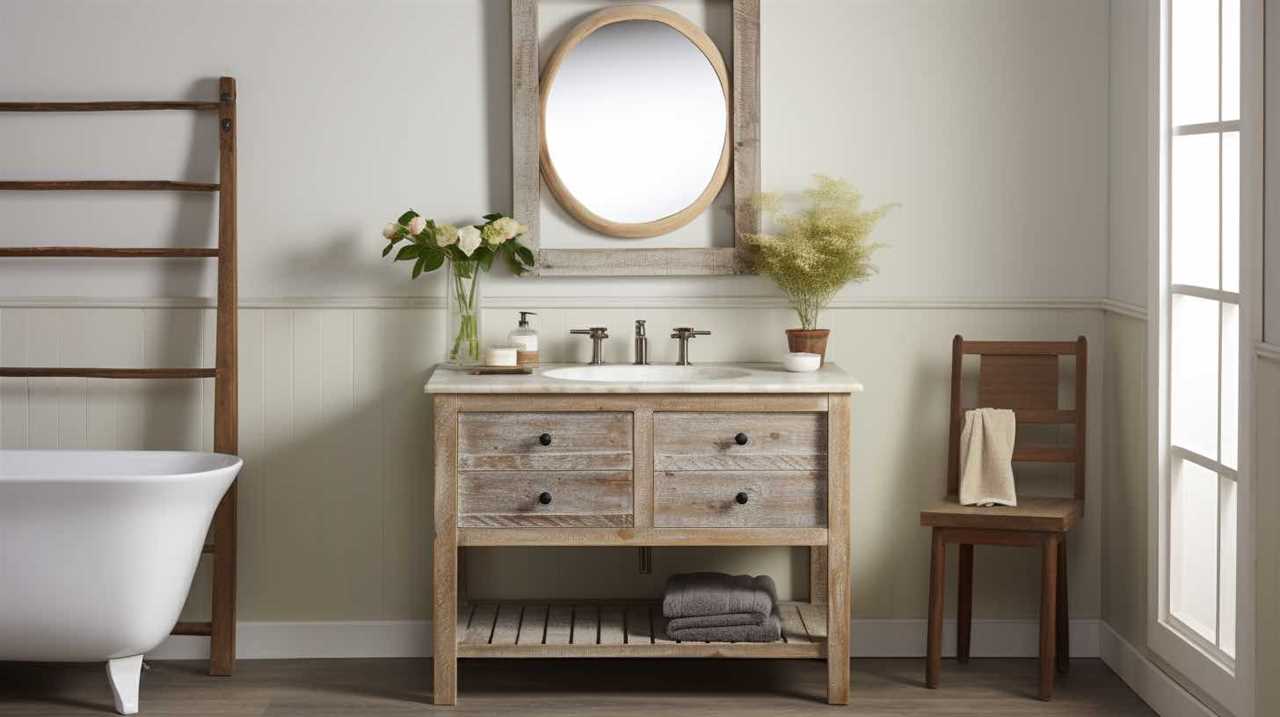
When it comes to bathing in a hospital setting, we recognize the difficulties and significance of upholding cleanliness.
In this article, we will explore the specialized equipment available and the assistance provided by healthcare professionals.
We will also share tips on maintaining comfort and privacy during baths.
So, if you desire mastery in navigating the world of hospital bathing, read on for valuable insights and practical advice.

Key Takeaways
- Maintaining cleanliness and hygiene in hospitals is crucial for the well-being and safety of patients and healthcare professionals.
- Patient discomfort is a significant challenge during hospital baths due to physical limitations, pain, and embarrassment.
- Specialized bathing equipment ensures patient safety and plays a crucial role in infection control.
- Healthcare professionals assist patients during the bathing process, ensuring their safety and infection control.
Importance of Hygiene in Hospitals
We prioritize maintaining cleanliness and hygiene in hospitals to ensure the well-being and safety of both patients and healthcare professionals. Preventing infections is a crucial aspect of our mission, as it directly impacts patient well-being.
By implementing strict hygiene protocols, such as regular handwashing, disinfection of surfaces, and proper waste management, we aim to create a safe and sterile environment. Our dedicated team of professionals undergoes rigorous training to adhere to these protocols and promote patient well-being.
Additionally, we emphasize the importance of hygiene education for patients and their families, empowering them to actively participate in infection prevention. Regular audits and inspections are conducted to ensure compliance and identify areas for improvement.
Challenges of Bathing in a Hospital Setting
When bathing in a hospital setting, there are several challenges that healthcare professionals and patients must navigate. Two significant challenges are patient discomfort and infection control. Patients often experience discomfort during hospital baths due to physical limitations, pain, and embarrassment. Healthcare professionals must be sensitive to these issues and find ways to make the bathing process as comfortable as possible for patients. In addition, infection control is a top priority in hospitals. Bathing requires close contact between healthcare professionals and patients, increasing the risk of spreading infections. Strict protocols, such as proper hand hygiene, the use of personal protective equipment, and regular cleaning and disinfection of bathing equipment, are essential in minimizing the risk of infection transmission. The table below summarizes the challenges of bathing in a hospital setting.

| Challenges | Solutions |
|---|---|
| Patient discomfort | Sensitive care |
| Infection control | Strict protocols |
Specialized Bathing Equipment for Patients
One essential aspect of addressing the challenges of bathing in a hospital setting is the utilization of specialized bathing equipment for patients.
These specialized tools and equipment not only ensure patient safety but also play a crucial role in infection control. By using equipment specifically designed for bathing patients, healthcare professionals can minimize the risk of accidents and injuries during the bathing process.
Additionally, specialized equipment such as adjustable shower chairs, grab bars, and non-slip mats provide stability and support, reducing the chances of falls and promoting patient safety.
Moreover, these tools are designed to facilitate proper hygiene practices, allowing for effective cleaning and reducing the spread of infections.

Assistance Provided by Healthcare Professionals
Healthcare professionals offer crucial support and aid to patients during the bathing process in hospitals. They play a vital role in ensuring patient safety and infection control.
Here are some ways in which healthcare professionals assist patients during baths:
- They help patients with limited mobility to get in and out of the bath safely.
- They provide assistance with bathing tasks such as washing and rinsing.
- They ensure that patients are comfortable and secure throughout the bathing process.
- They monitor the water temperature to prevent burns or discomfort.
By providing this support, healthcare professionals not only ensure the cleanliness of patients but also prioritize their well-being and dignity.
In the next section, we’ll discuss tips for maintaining comfort and privacy during baths in hospitals.
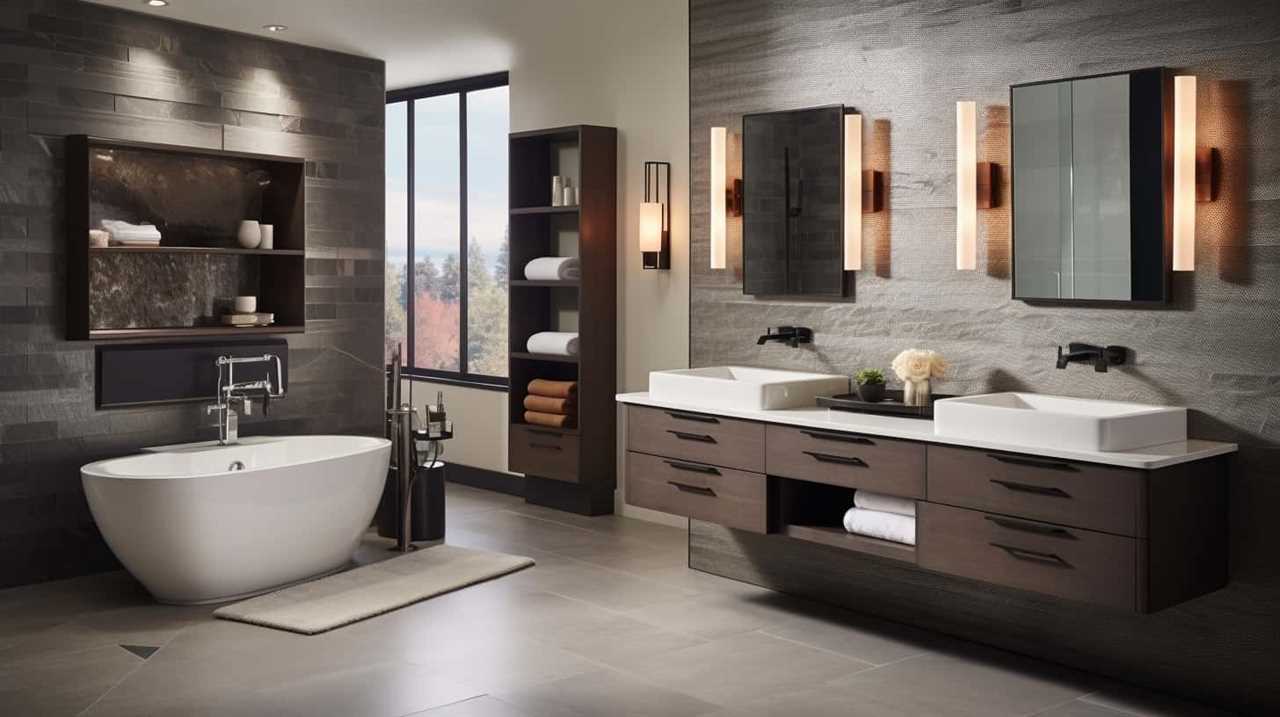
Tips for Maintaining Comfort and Privacy During Baths
As we transition to discussing tips for maintaining comfort and privacy during baths in hospitals, it’s important to prioritize the well-being and dignity of patients. Maintaining dignity is crucial when providing care, and bathing techniques play a significant role in achieving this.
One key tip is to ensure privacy by using curtains or screens to create a secluded space for the patient. Additionally, using warm water and gentle, soothing movements during the bath can enhance comfort and relaxation.
It’s important to communicate with the patient throughout the process, explaining each step and ensuring their consent and comfort. Providing adequate towels and clothing options can also contribute to maintaining dignity during and after the bath.
Frequently Asked Questions
What Are the Common Infections That Can Be Prevented by Maintaining Good Hygiene in Hospitals?
Prevention methods, such as maintaining good hand hygiene, are crucial in hospitals to avoid common infections. By washing our hands regularly and thoroughly, we can significantly reduce the risk of spreading harmful bacteria.

How Do Hospitals Ensure the Safety and Hygiene of Bathing Facilities for Patients?
When we ensure the safety and hygiene of bathing facilities for patients, we prioritize patient privacy and emphasize the importance of regular bathing. This helps maintain a clean and comfortable environment for their recovery.
Are There Any Specific Guidelines or Regulations in Place Regarding Patient Bathing in Hospitals?
There are specific guidelines and regulations in place regarding patient bathing in hospitals. These ensure patient privacy and the use of appropriate bathing equipment to maintain safety and hygiene standards.
What Are Some of the Common Challenges Faced by Healthcare Professionals During Patient Bathing?
Challenges faced during patient bathing include ensuring privacy, maintaining infection control, and addressing patient mobility issues. Hygiene is crucial for preventing healthcare-associated infections and promoting overall patient well-being.
Are There Any Alternatives to Traditional Bathing Methods Used in Hospitals to Ensure Patient Comfort and Hygiene?
There are alternative bathing methods in hospitals that ensure patient comfort and hygiene. No rinse alternatives and technological solutions are available to address the challenges faced by healthcare professionals during patient bathing.

Conclusion
In conclusion, maintaining proper hygiene in a hospital setting is crucial for both patients and healthcare professionals. Despite the challenges, specialized bathing equipment and the assistance of healthcare professionals help ensure patients receive the necessary care.
By prioritizing comfort and privacy during baths, patients can feel more at ease in their hospital environment. Overall, promoting hygiene in hospitals plays a vital role in creating a clean and safe environment for everyone involved.
With an impeccable eye for detail and a passion for bathroom-related, Ava leads our editorial team gracefully and precisely.
Under her guidance, Best Modern Toilet has flourished as the go-to resource for modern bathroom enthusiasts. In her free time, you might find Ava exploring antique shops and looking for vintage bathroom fixtures to add to her collection.
Bathroom Enhancements
When Was Bath and Body Works

We’ve all visited a Bath and Body Works store, but have you ever thought about when this popular brand first appeared? Get ready to be impressed as we delve into the past and explore the intriguing history of Bath and Body Works.
From its humble beginnings to its remarkable growth, we’ll explore the milestones that shaped this iconic company. Get ready to dive into the captivating story of Bath and Body Works, where beauty and innovation collide.
Key Takeaways
- Bath and Body Works was founded on August 3, 1990, by Leslie Wexner in Ohio.
- The company started as a small startup and expanded rapidly, establishing stores in Canada, the United Kingdom, and other countries worldwide.
- Bath and Body Works introduced Signature Collections to expand its product offerings and captivate a wider audience with unique scents and luxurious formulations.
- The brand emphasizes innovation and partnerships, collaborating with renowned designers and brands to create exclusive collections and deliver exceptional quality and creativity.
The Founding of Bath and Body Works
When Bath and Body Works was founded, we were a small startup with a vision to create high-quality beauty and fragrance products for our customers. The company was established on August 3, 1990, by Leslie Wexner in New Albany, Ohio.
Our journey began with a single store, and we soon expanded our offerings to include a wide range of bath and body products. Over the years, Bath and Body Works has become a renowned brand in the beauty industry, known for our luxurious and indulgent products. Our commitment to innovation and customer satisfaction has propelled us to great success.

Today, we continue to create exceptional products that enhance self-care routines and provide moments of relaxation and bliss. Our company history is a testament to our dedication to delivering the best in beauty and fragrance.
Early Years and Expansion
As we continued to grow and establish ourselves in the beauty industry, Bath and Body Works experienced rapid expansion in its early years. One key aspect of this expansion was international growth. We recognized the potential for our products beyond the borders of the United States and began establishing stores in Canada, the United Kingdom, and later in other countries around the world.
This international expansion allowed us to reach a broader audience and increase our global presence. Another factor contributing to our early success was product diversification. We expanded our range of offerings beyond just body care products to include home fragrances, candles, and personal care items.
This diversification helped us attract a wider customer base and solidify our position in the beauty market.

Introduction of Signature Collections
We introduced our Signature Collections, expanding our product offerings and captivating a wider audience with our unique scents and luxurious formulations. Our commitment to creating high-quality bath and body products led us to develop these collections, which quickly became customer favorites. We constantly strive to release new fragrance options and provide our customers with the ultimate sensory experience. Our Signature Collections feature a wide range of products, including body lotions, shower gels, and fine fragrance mists, all infused with our exclusive blends. Here is a table showcasing some of our most popular Signature Collections:
| Collection | Fragrance Notes |
|---|---|
| Japanese Cherry Blossom | Cherry Blossom, Asian Pear, Sandalwood |
| A Thousand Wishes | Sparkling Champagne, Peonies, Almond Crème |
| Warm Vanilla Sugar | Vanilla, White Orchid, Sandalwood |
| Cucumber Melon | Cucumber, Honeydew, Musk |
These Signature Collections have allowed us to provide our customers with a diverse range of scents to suit their individual preferences.
Innovations and Partnerships
Over the years, our team has forged numerous innovative partnerships to enhance the Bath and Body Works experience for our customers. Collaborations have played a crucial role in our product development, allowing us to offer unique and exciting offerings.
We’ve partnered with renowned designers and brands to create exclusive collections that cater to different tastes and preferences. By joining forces with these experts, we’ve been able to incorporate their expertise and creativity into our products, resulting in exceptional quality and innovation.
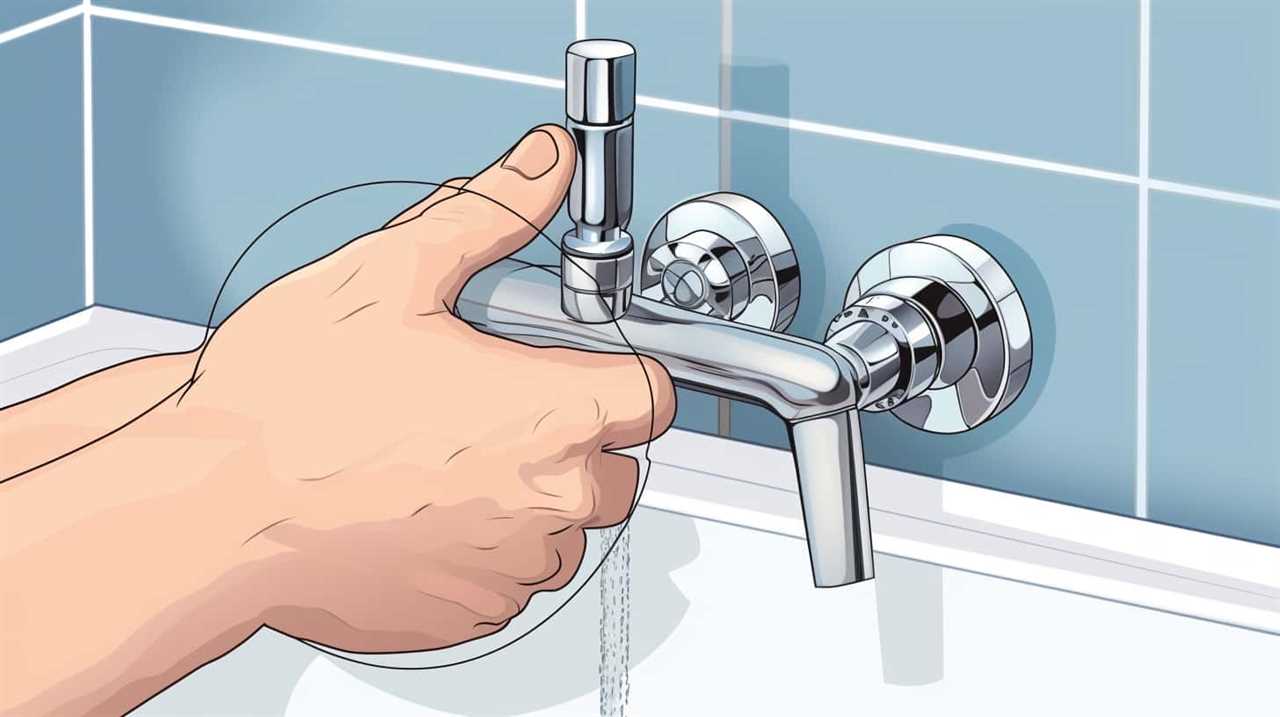
These collaborations haven’t only brought fresh perspectives to our brand but have also introduced our customers to new and exciting products they wouldn’t find anywhere else. As we continue to strive for excellence, our partnerships remain an integral part of Bath and Body Works’ commitment to delivering exceptional products and experiences.
Moving forward, let’s explore what Bath and Body Works looks like today.
Bath and Body Works Today
In today’s Bath and Body Works, we continue to innovate and offer our customers an exceptional experience through our exclusive partnerships. Our extensive range of bath and body products is designed to cater to every individual’s needs and preferences.
Here’s what sets us apart:
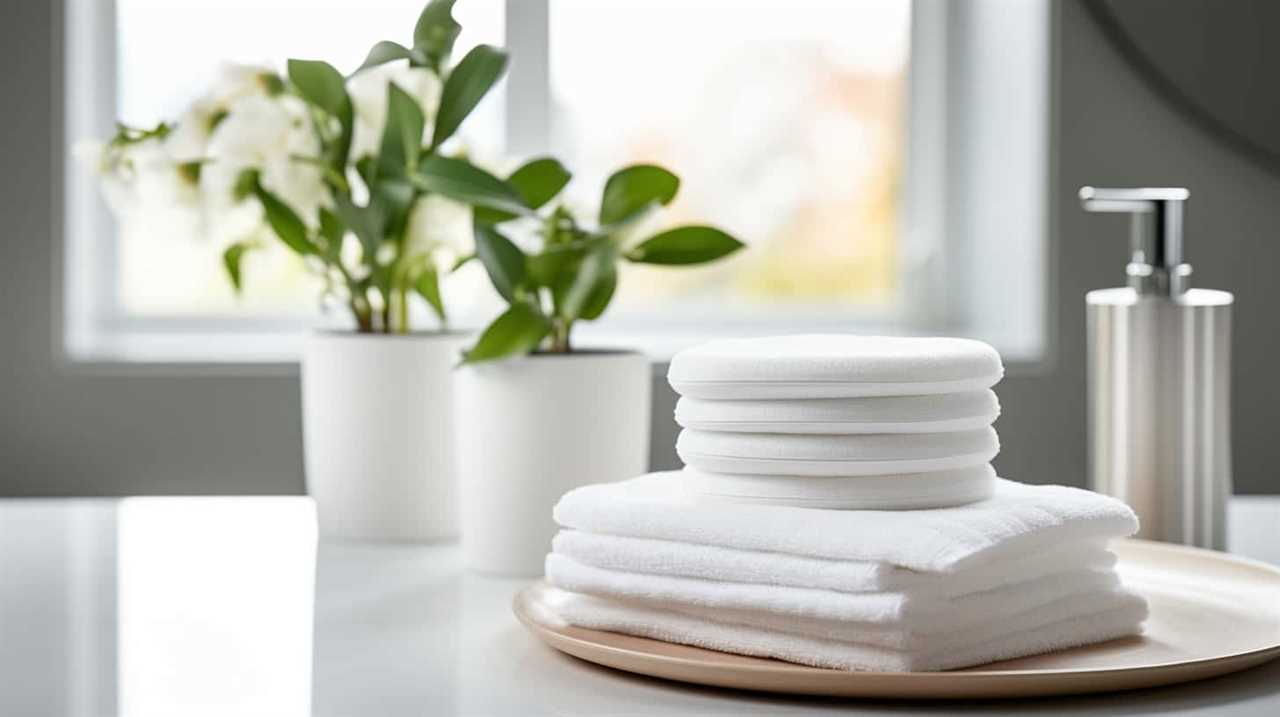
- Wide Range of Products: We offer a diverse selection of bath and body works products, including body lotions, shower gels, hand soaps, and candles. Our products are carefully crafted with high-quality ingredients to provide nourishment and indulgence.
- Signature Fragrances: Our bath and body works fragrances are renowned for their captivating scents. From fruity and floral to warm and cozy, we’ve a scent for every mood and occasion. Explore our extensive collection and find your perfect fragrance.
- Exclusive Partnerships: We collaborate with renowned brands and designers to bring you exclusive collections that are unique to Bath and Body Works. These partnerships allow us to offer you limited edition products and experiences that you won’t find anywhere else.
At Bath and Body Works, we strive to provide our customers with the best products and experiences, making us a trusted destination for all your bath and body needs.
Frequently Asked Questions
What Are Some of the Most Popular Scents or Products Offered by Bath and Body Works?
Some of the most popular scents and best-selling products at Bath and Body Works include their signature scents like Japanese Cherry Blossom and Warm Vanilla Sugar, as well as their famous candles and body lotions.
How Has Bath and Body Works Adapted to the Changing Consumer Preferences Over the Years?
Over the years, Bath and Body Works has successfully adapted to changing consumer preferences by offering a wide range of scents and products. They continuously innovate and introduce new collections to cater to the evolving needs of their customers.
Are There Any Limited Edition or Seasonal Collections That Bath and Body Works Releases?
Yes, Bath and Body Works releases limited edition and seasonal collections. They are known for their popular limited edition candles and best selling holiday scents, which are highly sought after by customers.
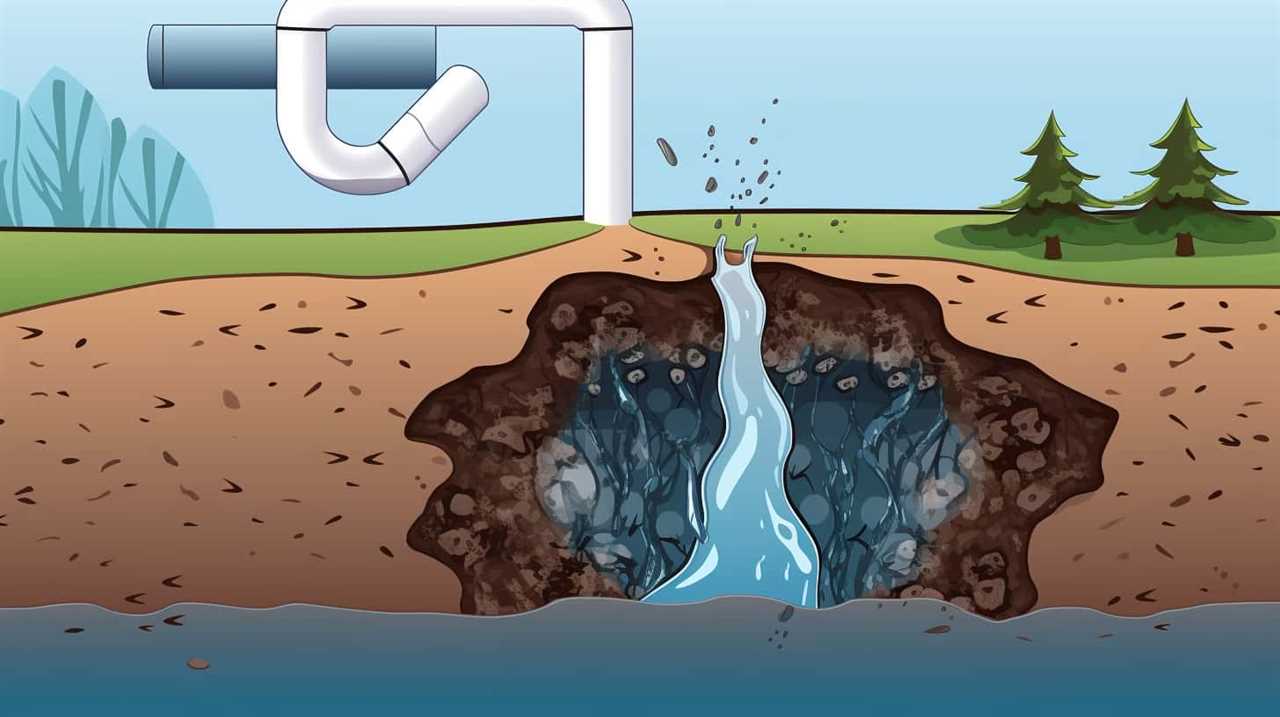
What Are Some of the Key Milestones or Achievements for Bath and Body Works?
Key milestones and achievements for Bath and Body Works include the launch of popular scents and products, catering to consumer preferences. Their limited edition and seasonal collections, along with effective marketing strategies, have contributed to the company’s growth and international expansion.
Can You Provide Some Insights Into Bath and Body Works’ Marketing Strategies and Campaigns?
In terms of marketing strategies and campaigns, Bath and Body Works has been successful in leveraging influencer collaborations and social media marketing. These tactics have allowed them to reach a wider audience and create buzz around their products.
Conclusion
In conclusion, Bath and Body Works has become a beloved brand known for its high-quality products and innovative collections. From its humble beginnings to its present-day success, the company has continuously evolved and adapted to meet the ever-changing needs of its customers.
With a wide range of fragrances and skincare products, Bath and Body Works has solidified its place in the beauty industry. So, next time you’re in need of some self-care or a great gift, head over to Bath and Body Works for a truly delightful experience.

With an impeccable eye for detail and a passion for bathroom-related, Ava leads our editorial team gracefully and precisely.
Under her guidance, Best Modern Toilet has flourished as the go-to resource for modern bathroom enthusiasts. In her free time, you might find Ava exploring antique shops and looking for vintage bathroom fixtures to add to her collection.
-

 Bathroom Enhancements2 months ago
Bathroom Enhancements2 months agoWill Hot Bath Lower Blood Pressure
-

 FAQ - Advanced Bathroom Queries3 months ago
FAQ - Advanced Bathroom Queries3 months agoWhich Countries Use Bidets the Most
-

 Reviews1 month ago
Reviews1 month agoLDian Smart Toilet Review [2024]
-

 Reviews2 months ago
Reviews2 months agoKohler Innate Smart Toilet Review [2024]
-

 Reviews2 months ago
Reviews2 months agoKohler NUMI 2.0 Smart Toilet Review [2024]
-

 Reviews2 months ago
Reviews2 months agoCANEST Smart Toilet Review: The Ultimate Bathroom Upgrade [2024]
-

 Toilet Types3 months ago
Toilet Types3 months agoAre Bleach Tablets Bad for Your Toilet
-

 Reviews2 months ago
Reviews2 months agoWoodbridge B0970S Smart Bidet Toilet Review [2024]






















